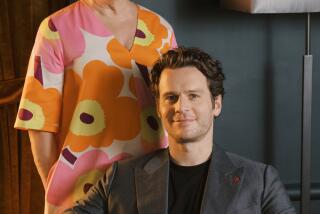The Life and Sad Times of the Creator of ‘Frankenstein’
- Share via
She was the daughter of two advanced thinkers: radical philosopher William Godwin and pioneering feminist Mary Wollstonecraft. She became the wife of one of the world’s most sublime lyric poets, Percy Bysshe Shelley.
And even those who do not know these illustrious names would surely be familiar with the name of her most famous novel: “Frankenstein.” But who was she, in and of herself?
Miranda Seymour’s biography of Mary Shelley (1797-1851) provides a thoughtfully considered, lifelike portrait of a complex, often misunderstood character. Mary’s courageous mother, author of “A Vindication of the Rights of Woman,” died shortly after giving birth to her. Her beloved father, author of “Political Justice,” then married Mary Jane Clairmont, an overbearing woman with two children of her own who was roundly disliked not only by his daughter, but by most of his friends. Mary was just 16 when she ran off with the brilliant, rebellious, aristocratic 22-year-old Shelley, who at the time was still married to his first wife, Harriet Westbrook. (Shelley had eloped with her some years earlier.)
Tagging along with the romantic duo was Mary’s 15-year-old stepsister, Jane Clairmont, who was soon styling herself by the more dashing name of Claire. Mary would describe her as “the bane of my existence,” and much of that existence was spent trying to keep Claire at bay. When not cozying up to Shelley, who had a weakness for comforting young ladies in distress, Claire decided to throw herself at the then more famous Lord Byron, who got her pregnant, but soon lost interest in her, although he remained friendly with Shelley and Mary. It was at a ghost-storytelling session at Byron’s Villa Diodati on Lake Geneva in the summer of 1816 that Mary came up with the germ of the idea for her novel “Frankenstein.” Although often read as a story about science run amok, it is, as Seymour reminds us, more essentially a story about what happens to a creature who is denied the solace of human love.
Having been raised in an atmosphere sympathetic to liberty, equality, fraternity and free love, the teenage Mary blithely flouted convention and was disappointed and hurt by her father’s stern disapproval. Mary and Shelley found themselves social outcasts--like Frankenstein’s hapless monster. What began as a thrilling adventure--a love match between two brilliant, idealistic souls--was soon shadowed by anxiety, guilt and loss.
Within months, the suicide of Mary’s older half-sister Fanny Imlay (who may also have been in love with Shelley) was followed by the suicide of Shelley’s deserted first wife. Mary and Shelley’s first child, a girl, died shortly after birth; their daughter Clara, barely a year old, died in 1818; and their adored, sweet-natured William died a year later, age 3 1/2.
Claire’s child by Byron was consigned by her uninterested father to a convent, where she too died. The peripatetic life the Shelleys led in England and on the Continent--changing lodgings, fleeing creditors, serving as mediators between Claire and Byron--was clearly a great strain, especially on the children.
Mary turned her grief inward: in Shelley’s eyes, she seemed cold and distant. He sought solace elsewhere: in the company of Claire, in a short-lived but intense infatuation with Emilia Viviani, who occasioned his great love poem, “Epipsychidion,” and in the soothing presence of Jane and Edward Williams, an unmarried couple with whom the Shelleys shared their last home in the Italian town of Lerici. When Shelley and Edward drowned in a boating accident in 1822, Mary was doubly devastated, not only by the loss of her husband, but by feelings of remorse at having withdrawn from him emotionally.
She devoted the rest of her life to the care of their one remaining child, Percy Florence, and to the fostering of her husband’s posthumous reputation. Left with little in the way of funds, Mary was in the awkward position of trying to obtain an allowance for herself and her son from Shelley’s father, Sir Timothy, who disapproved of her so strongly that he refused to meet her. He did consent, once or twice, to meet young Percy Florence, who was destined by primogeniture to inherit his title and estate. But any support he gave in the meantime was contingent on Mary’s promise to keep the Shelley name out of print.
Seymour’s sensitive and intelligent account of Mary’s long widowhood (she was only 25 when Shelley died) sympathetically delineates the constraints she was under and shows how diligently she worked to foster Shelley’s reputation in a climate that had grown markedly inhospitable to some of his more radical ideas. Mary also tried to earn a living by her own talents, writing several more novels and some historical studies of Italian and French literature that Seymour thinks have been unjustly neglected. She never remarried, although there were some romantic possibilities, including reformer Robert Dale Owen, storyteller Washington Irving and playwright John Howard Payne (who wrote the song “Home, Sweet Home”).
As Shelley’s fame continued to grow, Mary’s reputation underwent a number of permutations, continuing into the next century. In her youth, she was seen as an ardent young radical who defied convention. Later, she was portrayed as a cold, nagging wife who had been unable to respond to her husband’s genius.
Frequently, and not without reason, the widowed Mary was viewed as the suppressor of awkward facts, credited or blamed for molding the Victorian image of Shelley as ethereal angel. More recent scholars, like Emily Sunstein, have resurrected Mary as a boldly creative spirit who never lost hope. Seymour paints a sadder, and probably truer, picture of a hard-working, gifted woman, loyal even to friends who’d betrayed her, but haunted by a deep sense of loss and remorse. In stressing Mary’s anxiety and vulnerability, Seymour makes her courage and self-sacrifice seem all the more poignant.
More to Read
Sign up for our Book Club newsletter
Get the latest news, events and more from the Los Angeles Times Book Club, and help us get L.A. reading and talking.
You may occasionally receive promotional content from the Los Angeles Times.










